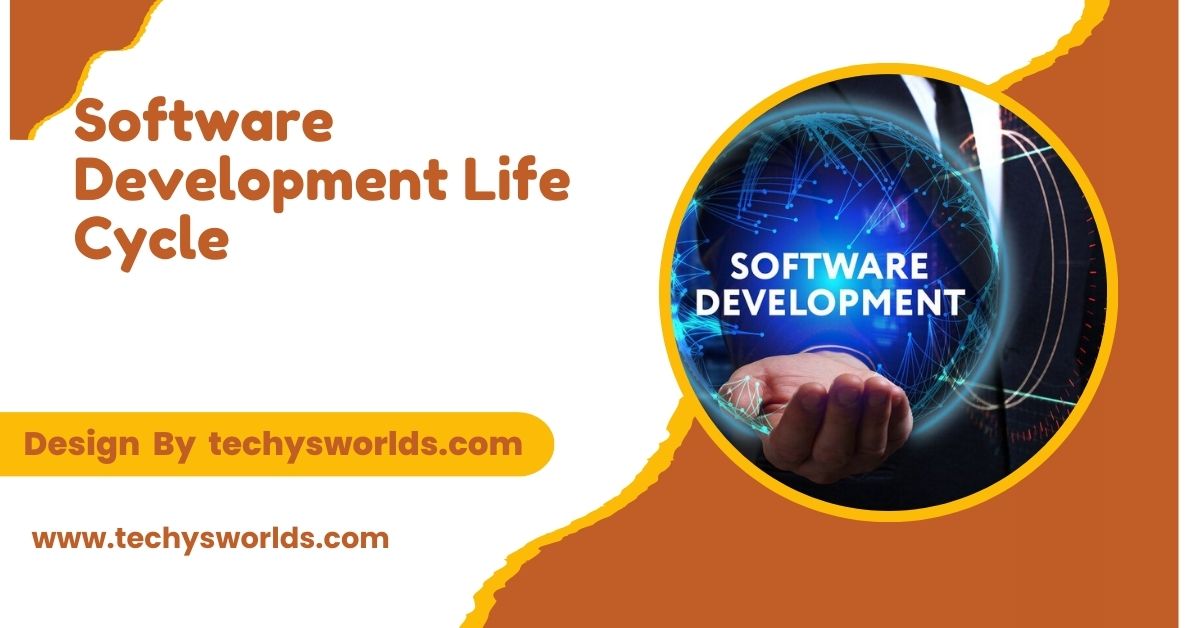The Software Development Life Cycle (SDLC) is a systematic process that outlines the steps involved in developing high-quality software from planning to maintenance.
In this article, we’ll break down each phase of the SDLC and explain why following this cycle is critical for delivering effective and reliable software solutions.
What is the Software Development Life Cycle:

The Software Development Life Cycle (SDLC) is a methodology that outlines the stages involved in software development. Each phase has its own tasks and deliverables to ensure that the software product is developed in a structured and controlled manner. SDLC helps to minimize project risks, manage development timelines, and ensure quality software that meets the requirements.
The key phases of SDLC include Planning, Requirement Analysis, Design, Development, Testing, Deployment, and Maintenance
Why SDLC is Important:
The SDLC is important because it provides a clear framework for developing software, reducing the chances of project failure. By following a structured approach, teams can effectively manage project timelines, costs, and quality. It also ensures that developers and stakeholders stay aligned throughout the entire process, from concept to deployment.
Additionally, the SDLC offers a transparent process for identifying potential risks early in the project, leading to fewer errors and more efficient project management.
Phases of the Software Development Life Cycle:
Planning Phase:
The Planning Phase is the first step of the SDLC and involves defining the scope and objectives of the project. During this phase, the team identifies potential risks, determines project costs, sets timelines, and assigns roles. It’s critical to gather input from stakeholders to ensure all needs are understood and addressed.
Requirement Analysis:
In the Requirement Analysis phase, the project team gathers and analyzes the software’s functional and non-functional requirements. This involves meeting with stakeholders to determine what the system needs to do, and capturing user expectations and system features.
Design Phase:
The Design Phase involves creating a detailed technical architecture of the software. The software’s functionality and structure are mapped out, including user interfaces, databases, and system interactions. Developers and designers collaborate to ensure that the system is built efficiently and can handle all specified requirements.
Also Read: What Software Does Electrical Estimators Use – Popular Tools in the Industry!
Development Phase:
In the Development Phase, actual coding begins. The design is translated into functional software using programming languages and frameworks. Developers follow the predefined architecture to ensure that all requirements are met..
Testing Phase: Ensuring Software Quality and Stability
The Testing Phase is one of the most critical phases of the SDLC. In this phase, the developed software is rigorously tested to ensure that it meets all requirements and is free of bugs. Testers perform various types of tests, including functional, performance, and security testing, to identify any issues.
Deployment Phase:
Once testing is complete and the software is deemed stable, it is ready for the Deployment Phase. During this phase, the software is released into a live environment where users can access it. Depending on the project, deployment may occur in stages, starting with a beta release to a smaller group of users before a full-scale launch.
Maintenance Phase:
The final phase is the Maintenance Phase, which involves ongoing support and updates after the software has been deployed. Over time, user feedback and new requirements may necessitate updates, bug fixes, or feature enhancements.
Popular SDLC Models:

Several different SDLC models exist, each offering a unique approach to the development process. Choosing the right model depends on the project’s scope, complexity, and time constraints.
Waterfall Model: A Sequential Approach to Software Development
The Waterfall Model is the most traditional form of SDLC. It follows a step-by-step, linear approach, where each phase must be fully completed before progressing to the next. While this model offers a clear structure, it may lack flexibility, as any changes require going back to earlier phases.
Agile Model:
The Agile Model offers more flexibility by using an iterative and incremental approach. Agile breaks the project into smaller cycles, allowing for continuous feedback, adaptation, and delivery of software in small, manageable pieces. This model is ideal for projects that need to respond to changing requirements quickly.
Scrum:
Scrum is a subset of Agile, focusing on short, time-boxed development cycles called “sprints.” Each sprint delivers a potentially shippable product increment, allowing teams to assess progress and make adjustments as needed.
Also Read: How To Include Software Skills In Resume Reddit – A Comprehensive Guide!
Challenges in the SDLC Process
While SDLC offers a robust framework for software development, it can face challenges such as unclear requirements, lack of stakeholder communication, and shifting project scopes.
- Unaddressed, these issues can lead to missed deadlines, budget overruns, and low-quality software.
- Addressing these challenges early and fostering open communication among developers, project managers, and stakeholders can help mitigate many of the risks associated with software development projects.
Best Practices for a Successful SDLC:
To ensure a successful SDLC, consider the following best practices:
- Clear Requirements: Always start with well-defined and documented requirements.
- Frequent Testing: Incorporate testing at every stage to catch issues early.
- Stakeholder Involvement: Engage stakeholders throughout the project for continuous feedback.
- Adaptability: Choose an SDLC model that fits your project’s needs and allows for flexibility.
- Documentation: Keep detailed records of each phase to maintain clarity and consistency across the development team.
FAQ’s
1. What are the key phases of SDLC?
The key phases include Planning, Requirement Analysis, Design, Development, Testing, Deployment, and Maintenance.
2. Why is SDLC important in software development?
SDLC ensures a structured approach to software development, minimizing risks, reducing costs, and improving software quality.
3. What is the difference between Agile and Waterfall in SDLC?
Agile is iterative and flexible, delivering software in small increments, while Waterfall is linear and requires each phase to be completed before moving to the next.
4. How does the Testing phase contribute to SDLC?
Testing identifies and fixes bugs or issues before the software is deployed, ensuring a stable and functional product.
5. What happens during the Maintenance phase of SDLC?
In the Maintenance phase, the software is updated, bugs are fixed, and enhancements are made to keep it functional and relevant.
Conclusion
The Software Development Life Cycle (SDLC) is an essential framework for ensuring the successful development and deployment of software solutions. By following its structured phases—Planning, Requirement Analysis, Design, Development, Testing, Deployment, and Maintenance—development teams can build high-quality software that meets both user and business needs.
Related Posts
Also Read: How To Install Software In A Docker Container – Step-by-Step Instructions!
Also Read: Is Propeirty For Software Defined Access – An In-Depth Exploration!
Also Read: How Much Is OK Mechanic Software Subscription – Exploring Subscription Options!



